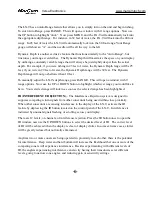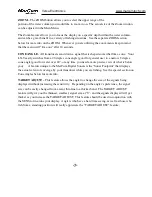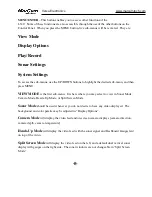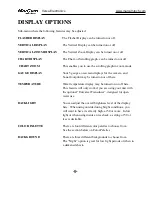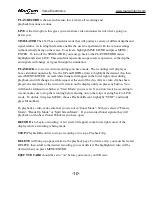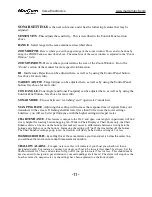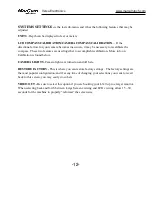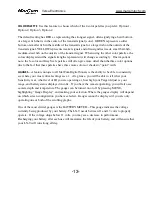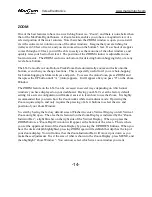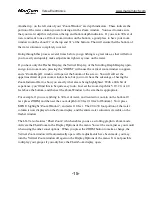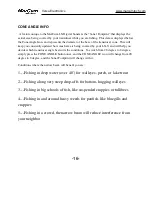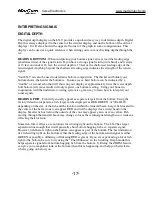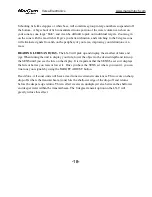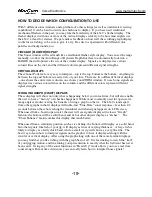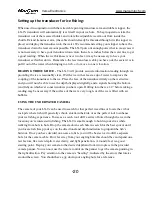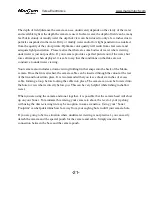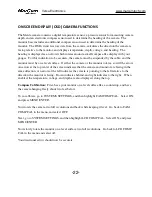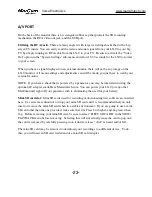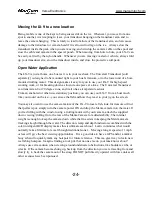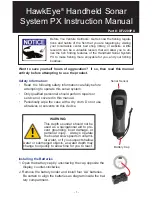
Se6ng up the transducer for ice fishing:
When used in conjunction with the retractable pivoting transducer arm and rubber stopper, the
LX-9’s transducer will automatically level itself in your ice hole. To begin operation, take the
transducer out of the recessed holder, and rotate the adjustable ice arm out from inside the
shuttle. Extend transducer arm, (the cable should already be threaded through it with stopper in
place) and deploy the transducer into the water. We recommend setting your stopper to have the
transducer down the least amount possible. The LX-9 puts out enough power that in most cases it
is not necessary to have your transducer down more than a few inches below the water line to get
a good reading. When the ice thickness is over two feet, it may be necessary to have your
transducer set farther down. Remember--the less transducer cable you have out, the easier it is to
pull it out of the water when bringing in a fish, or to move to a new location.
READING THROUGH ICE -
The LX-9 will provide accurate information reading through ice
providing the ice is reasonably clear. Wet the ice with at least a cup of water to improve the
coupling of the transducer to the ice. Place the face of the transducer firmly on the wetted ice,
and you will now be able to see the depth displayed digitally, and a signal showing the bottom
(and fish) on whichever sonar windows you have open. Drilling into the ice 1-2” before taking a
reading may be necessary if the surface of the ice is very rough, or if the ice is filled with air
bubbles.
USING THE UNDERWATER CAMERA
The camera of your LX-9 can be used to search for that perfect weed line or locate the crib or
rock pile where fish will generally school, entertain the kids, or as the perfect tool to enhance
your ice fishing experience. To use as a search tool, drill a series of holes through the ice in the
location you’re interested in fishing. The LX-9 is small enough to hold in your arms while
walking from hole to hole. Drop the camera down each hole in search for the best spot or until
you locate fish. Keep your eye on the directional and depth indicators to pinpoint the fish’s
hideout. Once you have decided on an area to fish, you will be best served to drill a separate
hole for the camera cable. How far away from your angling hole this should be can depend on a
few factors, like water depth, water clarity, and light penetration. Around 4 feet is a good
starting point. Deploy your camera to the desired depth and lock it into place in the provided
camera panner. You can now use the remote control on the panner to get the camera pointing in
the right direction. Pay attention to the camera’s “heading”, indicated by the arrow that rotates
around the screen. You should have a jig down your angling hole for a reference.
-20
Versa Electronics
www.marcumtech.com

